Crime Scene Investigation – Finding The Clues
Detectives use a variety of means to collect crime scene evidence. When attempting to locate evidence, investigators must be methodical. One way to be certain they’ve combed every inch of a crime scene is to conduct structured, patterned searches, such as spiral or grid searches.
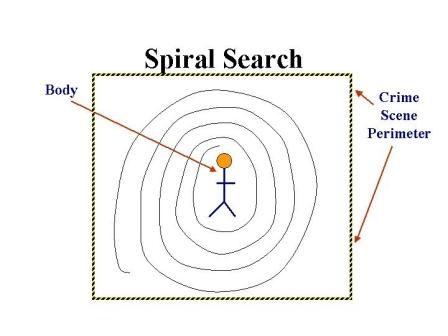
Spiral search patterns are an effective means of locating evidence.
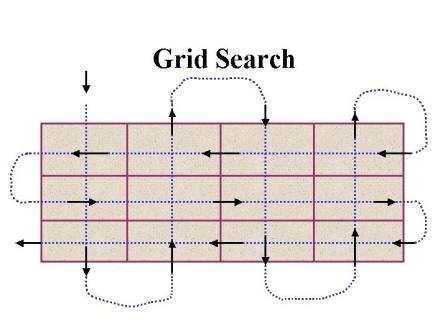
Grid search patterns are especially effective when searching large areas, such as a field or other open land areas. Each grid block is assigned a number or letter. Detectives use those identifiers as reference points when testifying in court. Example: “I located the murder weapon in block number 4. I also discovered spent bullet casings in block number 3.”
Alternate light sources (ALS) are useful when attempting to locate hard-to-see evidence, such as fingerprints and body fluids. Devices such as Sirchie Fingerprint Laboratory’s Krime Site Imager are invaluable for detecting and capturing fingerprint images. The KS Imager is battery operated and is capable of recording images in bright light or in total darkness.
All too often, fingerprints are destroyed during crime-scene processing (dusting and lifting prints) Using a device such as the KS Imager allows investigators the opportunity to photograph a perfect image of a fingerprint before attempting dust and lift it. Therefore, even if the print is marred, detectives will still have perfect image of the print, an image that’s permissible as evidence.
A detective uses a Krime Site Imager to locate and photograph fingerprint evidence.
Some crime scenes, such as labs used for manufacturing methamphetamine, contain hazardous materials, such as flammable and toxic chemicals and fumes. When searching those dangerous crime scenes, investigators must wear protective gear and clothing.
A detective wearing a hazmat suit gathers evidence from a meth lab.

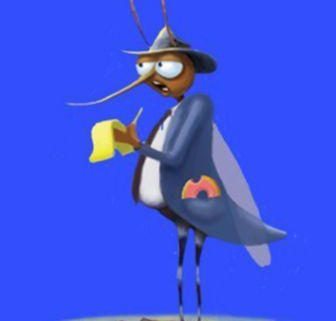
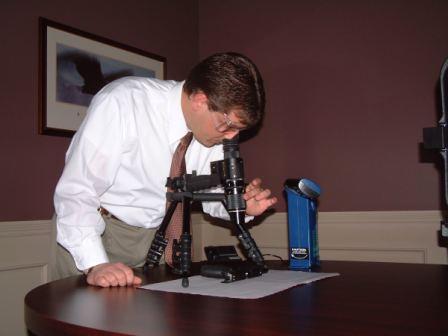
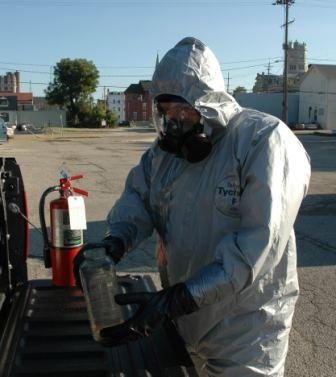



Lee, I’m sitting here ROTFL!!!! One of my dad’s favorite stories was about his grandmother who wanted to grind some fresh horseradish root, but didn’t want to do it in her apartment because of the incredible awful smell. So, she took it to the stable, to be out of the rain and commenced to grind away.
Well, one of the horses did not approve, used it’s nose to open the stall, walked up to the bucket, turned around, and kicked it so that the contents spread wildly over everything around including, the ceiling, walls, and my great-grandmother. She was not happy.
The horse went back to it’s stall.
But, there you are – what a false lead some Luminol would have provided if it had been invented then. (I’m guessing it wasn’t.)
Interesting you mentioning grid searches. That is the same type of approach we’d take in my field (prairie restoration) to locate threatened and endangered plant species. We use the same approach, using a tape measurer and string.
Very interesting. Thanks, Lee! 🙂 And thanks also for not making me feel any more moronic than by necessity I am.
Jennie – This is a great question. Believe me, the more light the better when you’re searching for clues. Television uses darkness to enhance the suspense.
There are times; however, when evidence, such as body fluids show up better when the lights are out and officers are using alternate light sources. And, Luminol glows in the dark when it contacts the hemoglobin in blood. Of course, it also reacts with bleach and horseradish, but not many people have horseradish spatter on their floors and ceilings. Luminol’s reaction to blood gives off a brighter glow then when it contacts other substances. Trained investigators know the difference.
Hey, Lee: On shows like CSI – which I don’t watch often because I’m squeamish – somehow it’s always dark when the investigators investigate a crime scene. And they never turn on the lights; they’re always using flashlights. You mention cameras/imagers that can take impressions in total darkness. Is it somehow better to investigate in the dark? It would seem to a lay-person – me – that one would be able to see more in the light, but maybe not? Do the TV shows do it that way because it’s creepier – makes for better entertainment – or is there another reason? (And because I’m feeling like an idiot right now, please forgive me if this is an exceptionally stupid question, which it probably is…)
Yeah, bugged me, too.
No, the boundaries aren’t normally that precise. A simple tape measure works just fine. The measurements can be made outside the scene. I have seen investigators stretch string across an area, using it as a marker.
I’m going to show tools and measuring devices in the tomorrow’s post.
Love the buggy investigator – I know the feeling!
About setting up an accurate grid – do they use something like a transit, or one of the hand held laser distance measurers? Can’t think of another accurate way that wouldn’t potentially contaminate the scene.